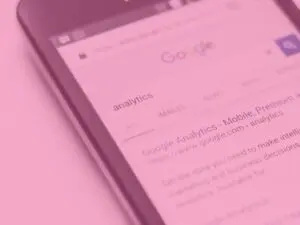
Blog
ILC Communication: Translation and Localisation for Better Website Results
3rd Mar, 2023
Local SEO and ensuring that your content is correct for local audiences is a big deal, especially when we consider that nearly 46% of all Google searches are seeking local information and 97% of people learn more about a local company online than anywhere else (Hubspot 2022).
Our Technical SEO, Steve, spoke recently about the importance of technical elements of your website including Hreflang for localisation and translation. We wanted to dig a little deeper into this topic, so we spoke to multilingual marketing specialists, ilc Communication part of PAB group, to find out more about translation and localisation.
Q: Why is it important to get expert help with translation?
Sara Davison: There are AI tools out there, like Google translate and DeepL but to make sure that your company’s tone of voice and branding remains cohesive, and to resonate with your target audience, you really do need to localise your content when you’re translating your website.
It needs to take into consideration local nuances and abbreviations that might not be understood in that specific country. So, it’s making sure that you’re communicating with your target market regardless of the language or location.
Q: What are the specific differences between localisation and translation?
Will Milsom: Unlike direct translation, which is simply one text to another, localisation takes the text a step further and achieves a natural reception and higher level of engagement that simple translation doesn’t. It takes into account, as Sara mentioned, culture and nuance and people’s regional and national understanding.
For example, the way I communicate in English is not only different from other languages in the words I use but the tone of voice, style and frequency of unique language features. The common use of idiomatic phrases in English may not be appropriate depending on the language and the area that you target.
Too many people in marketing tend to think ‘well I’m successful in England with my marketing approach, my content and my branding so I can just transfer that over to international campaigns’, but that’s not best way to do it.
Everything from copy through to colours all have different meanings and interpretations in different cultures, so it’s not just about words. Essentially, localisation can help you fit in and have a natural reception when you go into different global markets.
Q: What are some of the potential pitfalls of localisation? What dangers are there with not doing it properly as a business?
Sara Davison: There have been some very high-profile businesses that have got things wrong in the past. There’s a story of Ford advertising in Belgium and their translation from English went horribly wrong.
In English they spoke about a car having a good body, whereas the translation said that the car had a good corpse. Of course, people are not going to want to drive a car when it’s related to being a corpse! So even the big companies have got it wrong by not doing it properly.
A big pitfall is misinterpretation. We know of a company who used a freelance translator to do some Chinese translations which resulted in the company getting their website shut down in China because the translation wasn’t in line with their requirements for keywords and content restrictions. So there can be real dangers to the business, and it could potentially be really costly.
If you’ve paid someone to do a basic translation and they get it wrong and your website gets shut down in that particular country, you’ve got to spend probably double that rectifying the problem.
Another pitfall is that AI translations will not understand local nuances. They will not understand the cultures, the meaning behind the text, or the tone of voice needed to communicate properly.
Q: What are the benefits of localisation for e-commerce businesses, for example, and what kind of things should they be considering when they’re looking to internationalise their websites?
Will Milsom: Digital marketing has a very clear benefit of achieving globalisation for brands. In the past we’d have to focus purely on our region of the UK, now with a global campaign we can reach the four corners of the earth. Simple website localisation and international SEO campaigns will quickly build international traffic to your website and potentially entire new audiences.
Things you might not even consider translations for like product descriptions on Amazon, will benefit from being appropriately described in different languages and different cultures.
And the way you do that will shift, depending on which target market you’re looking at, so it’s important to be informed as possible in your multicultural marketing campaigns.
A common misconception within the translation industry is that you already have to have an international audience in order to look at translation.
In fact, translation is a tool that can be used to captivate an audience before you even have it. It can be a good way of assessing a market, seeing if you generate interest, looking at your Google Analytics reports, seeing if it’s drawing in a specific country and then actually creating a campaign to convert that interest into conversions.
So, there’s a clear advantages to achieving internationalisation with multicultural campaigns, provided they are done right.
Q: How many different points of entry do you think there are in terms of when people should start looking at translation?
Will Milsom: In terms of point of entry, we see it happen really in every stage. Whether they’re an established business looking to capitalise more on some interest that they’ve seen, or the opposite end of the spectrum when they’re a small startup and thinking of just doing some target research out in different countries and markets abroad.
Really, it’s a broad spectrum, but if you’re looking to expand your reach then translation and looking into other cultures and understanding other people is a great way, not only to have a more informed and inclusive approach to your business, but actually to spark growth in areas that your competition may have completely disregarded.
Q: For businesses that are looking to get started, do you think there’s ever a case for just translating a few pages on a site?
Sara Davison: Yes, absolutely. If they’re in an exploration stage it might be that they just want to translate a landing page into a specific language and from that monitor the amount of traffic that’s coming through and build on that, if they think it’s worthwhile.
Then maybe they’d be looking into translating the full website and all their products into that specific language. There’s lots of companies that dip their toe in the water first.
Q: What does a customer journey look like with ilc for businesses that may be trying translation for the first time? How much support can you offer?
Sara Davison: We will offer full support. Whether it’s a landing page that they want to try or translate the entire website, we will work together to decide what content should be included in that.
We can also create content from a brief as well, so we can create content in another language from scratch for them based on what they’re looking to achieve and who their market is.
Because of our quality control processes in ilc, we will translate but you will always have two translators per project.
There’s always a really high emphasis on our quality, so it’s translated by one translator but always double checked by a second, and we will also do a final check once before the content is shared. So yeah, we will hold the hand of the customer from start to finish.
To read Steve’s article about translation and Hreflang tags click here.







